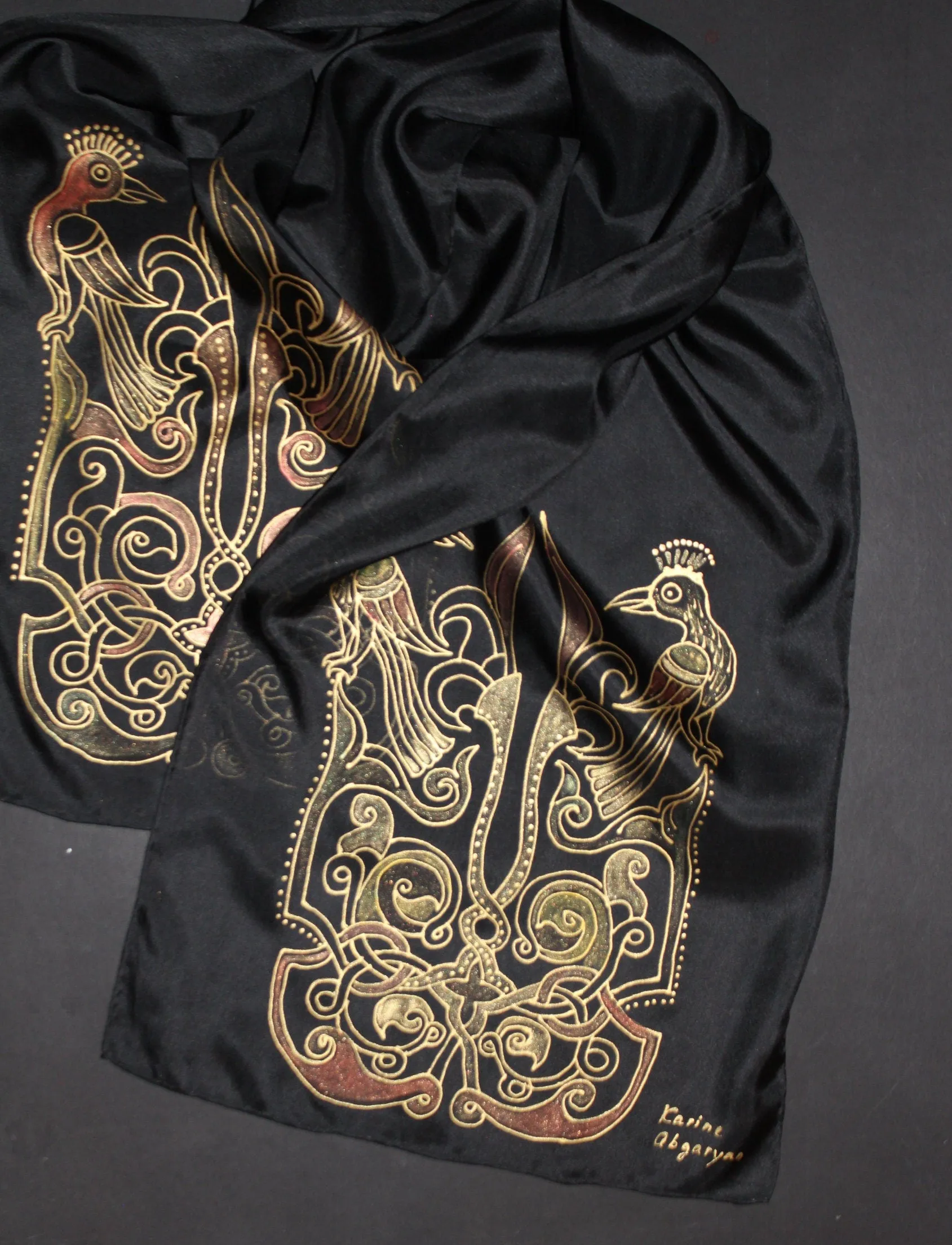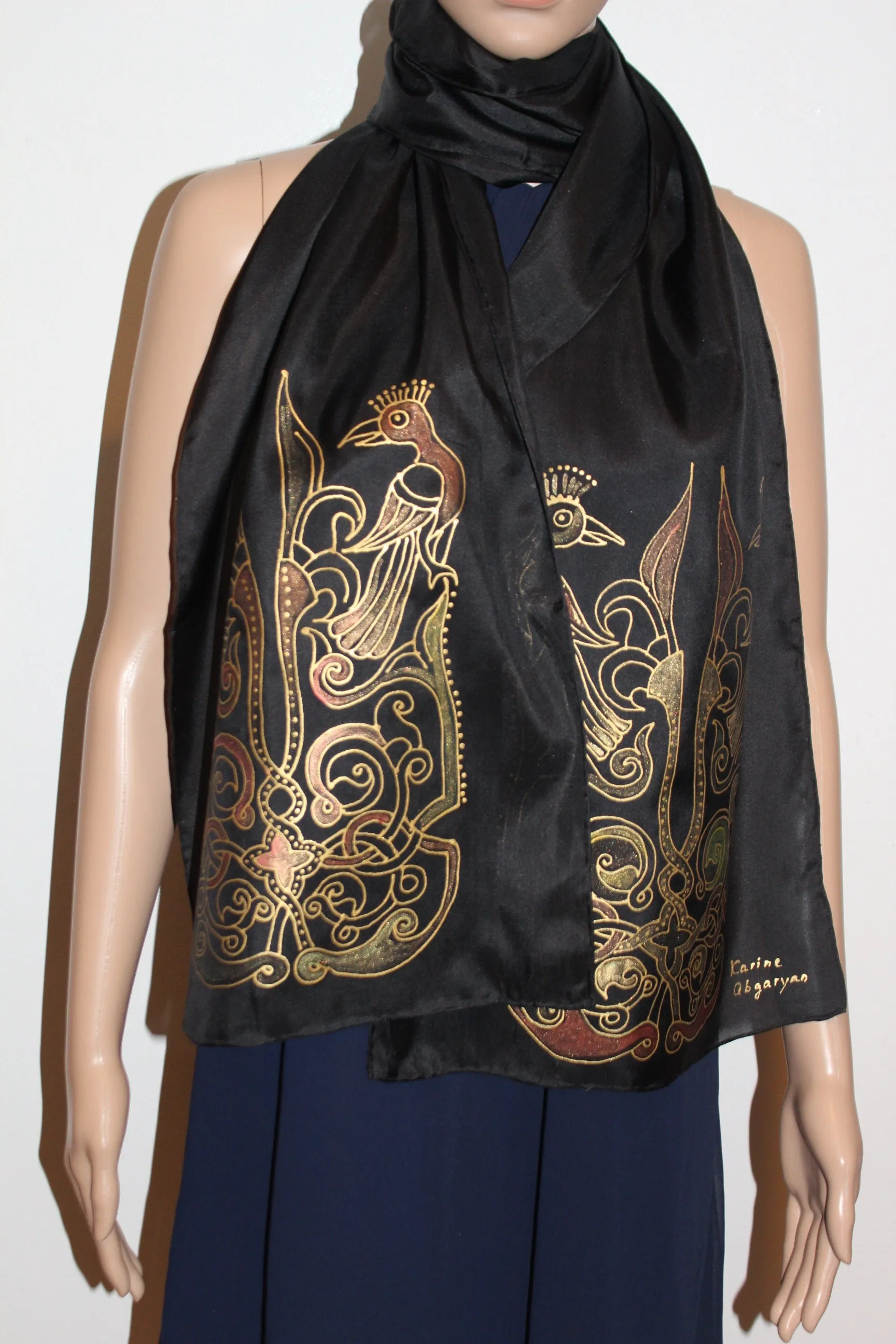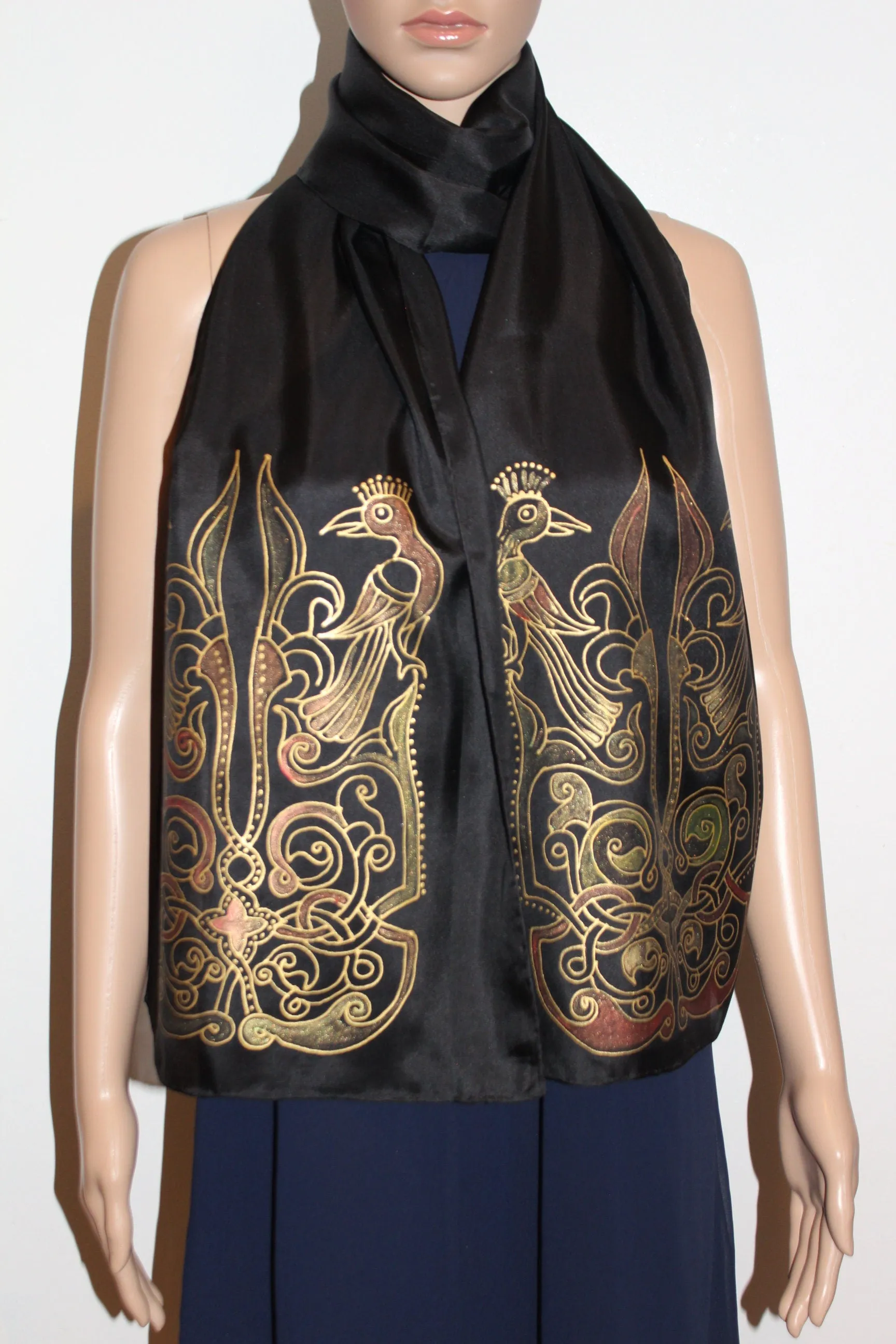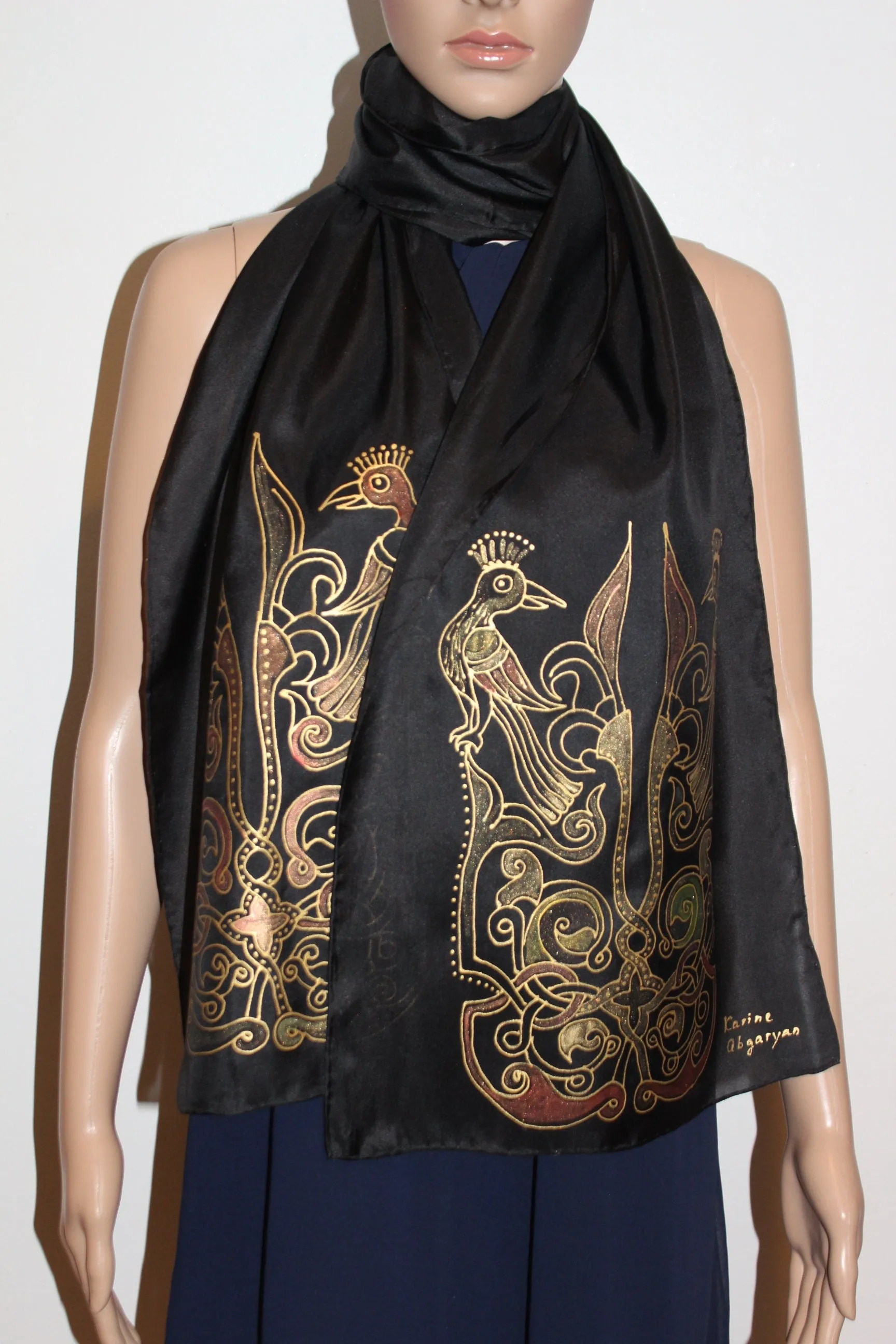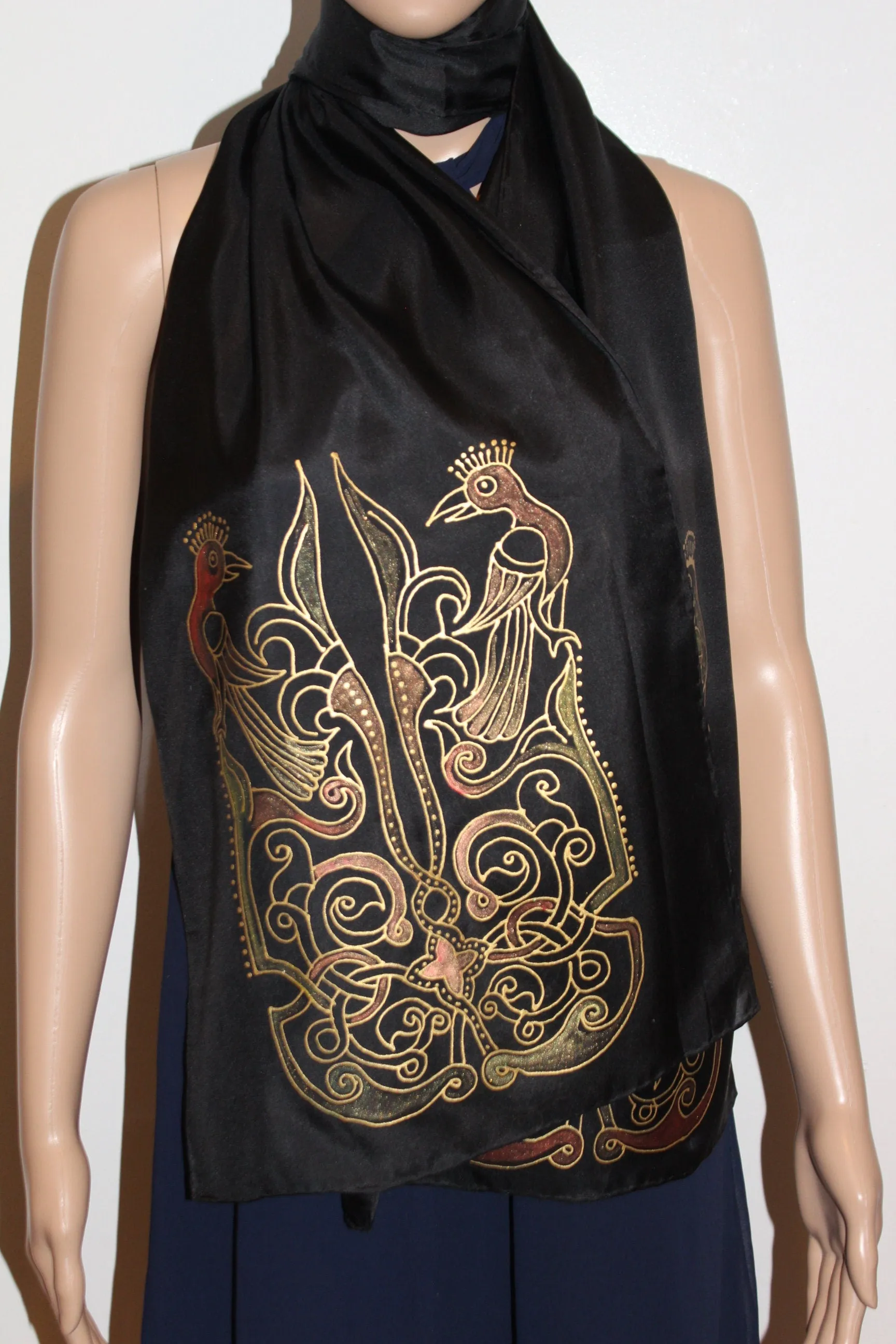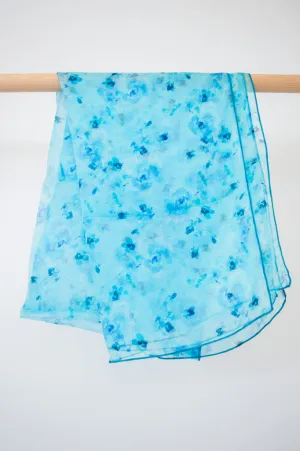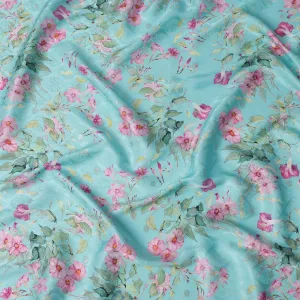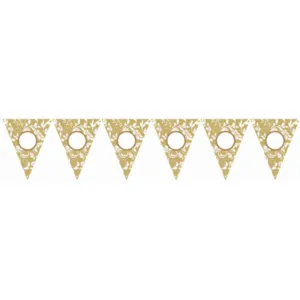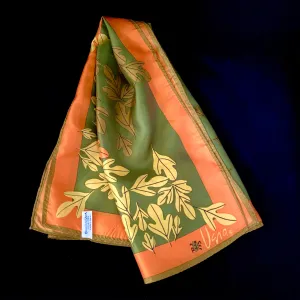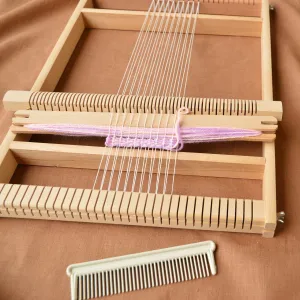For more visit my store
Dear visitors, please note
The scarves are washable, as it has been drawn with special fabric paint. They never get discolored or change color, if you take care right way. Here is some information. Originally white silk has been dyed and painted to other colours, that`s it can be a little thick (hard).
Care instruction
• Place your silk scarf in warm water with a mild silk-friendly detergent.
• Leave to soak (no more than 5 minutes).
• Rinse with warm water
• To help keep its hydrated feel, use a fabric conditioner in the final rinse (or even a small amount of hair conditioner or vinegar).
• Rinse well in cold water.
• Lay flat to dry.
• Iron - if the scarf has dimensional painting ONLY STEAM , if it`s a regular scarf hot iron from reverse side.
Hand painted silk scarf
Depicting birds has long been a part of Armenian historic art culture. From pottery, scriptures to numerous flags of Armenian dynasties, they seem to appear everywhere in ancient Armenia. The following is a part from an archeological study on Ancient Birds of Armenia.
Bird depictions are the most favored theme in the Armenian arts. Bowls and jugs originating from AD 11-13 C. show images of eagles, storks, doves, peacocks, wild ducks and other bird species. Despite their stylistic form, they are concise in their expression and are thought to serve as the prototypes for the bronze statuettes of waterfowl typical of the Late Bronze Age. Throughout the millennia the Lchashen statuettes retained their faunal diversity. Human impact, direct or indirect, has posed a threat to the many bird species which are in need of urgent attention.
Birds are truly miraculous creatures. Their ability to fly, their rare beauty and rich plumage colouration have attracted human attention since time immemorial. The best evidence for this are the bird pictures occurring on cliffs, painted pottery, bronze belts, stamps, coins and mosaic art. However, the identification of the species diversity and the evidence of how humans specifically used birds in the prehistoric past is perhaps only possible from the archaeological remains. Among early references dealing primarily with the analysis of bird remains, the work of DAL (1952) based on the archaeological materials from one year’s excavation at the Medieval town of Dvin is especially noteworthy.




